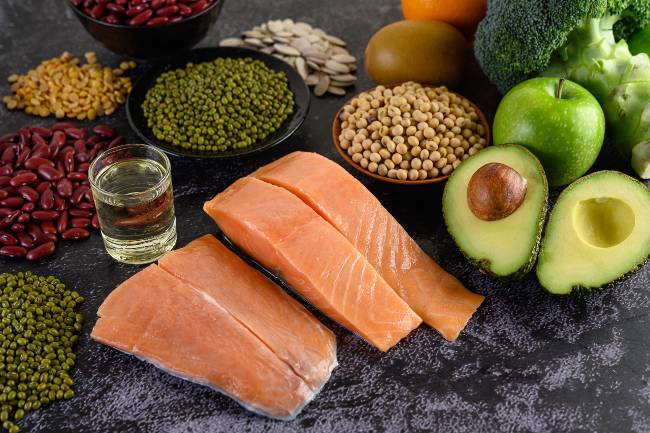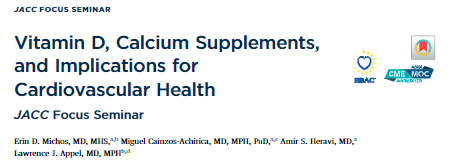Vitamin D has different names, and that’s because there are a couple of other vitamins in the vitamin D group. Vitamin D3-cholecalciferol is the most common worldwide. In Vitamin D2, it is ergocalciferol
Vitamin D is more than a vitamin. It’s a hormone, meaning it is a substance that is produced in one place and has its effects in other sites.
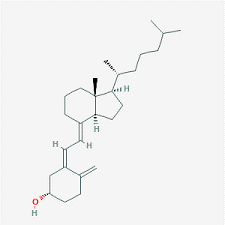
Vitamin D
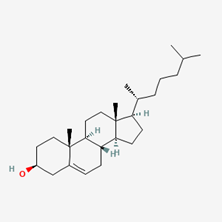
Cholesterol
In the image above, you can see the molecular structure. There’s a significant similarity between cholesterol & Vitamin D3.
The six-carbon ring structure is also known affectionately as the chicken wire format.
Vitamin D3 is formed by the skin when ultraviolet light (UVB) hits the skin. There’s some debate and argument regarding how much and how quickly sunlight works in creating Vit D. I’ve heard up to ten minutes of sunshine between 10:00 and 2:00 will create 1000-3000 international units.
The skin can give you close to a daily dose. I’ve also heard you’ll get that much from a whole day of exposure.
The following picture is disturbing, but it’s part of the history of medicine. This condition still occurs in some places but is becoming rarer. It is rickets. Once you get vitamin D into the population, you cure and prevent rickets.
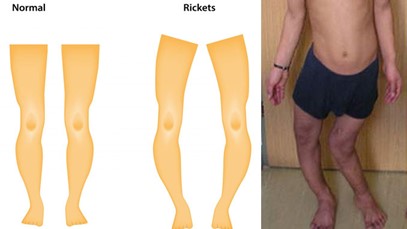
For a long time, we thought that was the end of the story. What we did not realize is it’s a more complex picture. Rickets is just the tip of the iceberg.
There are multiple functions and places where vitamin D impacts our metabolism. As I mentioned, its role is more like a hormone than a vitamin. It is a general type of anti-inflammatory. Medical researchers have credited Vitamin D with preventing cancer, mental health issues, diabetes, and cardiovascular disease.
Prevention of cardiovascular disease is my area. I can tell you that I found reliable information and data from science.
We watch for vitamin D. We get a vitamin D test on our patients.
Speaking of good science, Dr. Erin Michos is a cardiologist at Johns Hopkins.
https://www.jacc.org/doi/abs/10.1016/j.jacc.2020.09.617
The Wikipedia article on vitamin D, states that the preventive functions of Vitamin D are not proven or even well supported. That’s no longer true. This article needs to be updated.
You’ll see 10- 25 as a recommended level on the Wikipedia site. These levels are also outdated. Most labs also use these “standard” or “normal” levels. We don’t consider significant excess until about 80. We look to have it in the 60 to 90 range.
If we see someone with vitamin D levels in the 20s, we recommend increasing the dose. First, we ask if they are supplementing.
Sometimes a patient says, “I’m taking around 1,000 milligrams.” First of all, that’s just wrong. Vitamin D supplements don’t come in mg.
So I have them check the bottle. It’s either mcg (micrograms) or IU (International Units).
We’ll usually advise an increase to 4-6,000 IU per day.
You can get hypervitaminosis D (or vitamin D toxicity). It’s unusual. The biggest concern is kidney damage.
There’s debate about the levels at which damage happens. Researchers see it more when people take dosages intended for weekly use (25,000 to 50,000 IU) but daily. I have had two patients come to me with dangerous serum levels (over 100). Both had been taking 25,000 IU doses daily.
Vitamin D toxicity occurs, but it’s relatively safe for the benefit. The benefits were underlined dramatically during the COVID pandemic, with much greater cytokine storm episodes associated with lower Vitamin D3 levels.
Now let’s talk about obesity; you might wonder what obesity has to do with vitamin D? I’m getting ready to speak of populations with a risk for low vitamin D.
Why would obesity create a risk for low vitamin D? It’s a fat-soluble vitamin. Hence, people with increased fat have more vitamin D, but it’s spread into areas where you can’t reach it.
How about men & women of color? People of color have risk due to the lower conversion rate from sunlight. (Melanin blocks a large part of the Vitamin D conversion process.)
So Dr. Michos at Hopkins mentioned that women of color tend to have multiple risk factors for low Vitamin D. They should be aware and check their levels.
Women tend to have a higher percentage of body fat. And, as already mentioned, melanin lowers Vitamin D3 levels as well. Also, women tend to live & work indoors more than men. There are also behavioral components. Women tend to be more thoughtful about wearing protection when they’re in the sun.
Guess who almost always has problems with health-related stuff? In older people- our hormones are slowing down, and different components of our metabolism are slowing down. Yet, we get decreased absorption of vitamin D and dietary vitamin D. We have reduced production. You get vitamin D from a few foods, not a lot of them- one being cod liver oil.

What does this map of the US mean for vitamin D? The dark part of the US map has a population with a much higher risk for low vitamin D. In the lighter aspect, there is a much lower risk for low vitamin D.
Many people rely entirely on the environment.
Vitamin D increases calcium absorption by about a factor of 20.
Now let’s remark regarding vitamin K2. There’s a lot of focus now on it. Some researchers think vitamin k2 decreases cardiovascular disease.
What does Vitamin D have to do with Vitamin K2?
Vitamin K2 is supposed to help. The standard model for the mechanism is the dump truck.
Vitamin D brings calcium; vitamin K2 carries the calcium to the correct place. The perception is that vitamin K2 prevents calcium deposition in arteries, decreasing the arteries’ rigidity if we have low vitamin K2 and calcifying the artery wall that, leads to forming a rigid pipe. You have lower vitamin K2 here and more flexibility of the arterial wall. The evidence is inconclusive regarding the benefits of Vitamin K2.
I have a different perspective on the role of Vitamin K2. I think Vit K2 is related to decreasing Insulin Resistance (Prediabetes or Diabetes) by activating certain enzymes. But that’s a different topic for a separate article.
The bottom line is, that Vitamin D supplementation can provide significant benefits for those who need it, and the chances are that if you are older than 60, you probably need it. Supplementation requires the previous measurement of vitamin D levels.
If you found this article helpful and want to start taking steps toward reversing your chronic disease, Dr. Brewer and the PrevMed staff are ready to serve you no matter where you’re located.
To find out more, schedule a consult here: prevmedhealth.com
REFERENCES:
1. https://prevmedhealth.com/vitamin-k2-and-artery-calcification-series-part-1/
2. https://prevmedhealth.com/what-vitamin-d-can-do-to-your-immune-system-cv-health/
3. https://prevmedhealth.com/vitamin-k2-can-it-remove-plaque/
4. https://prevmedhealth.com/how-to-reverse-arterial-plaque/
5. https://www.jacc.org/doi/abs/10.1016/j.jacc.2020.09.617
